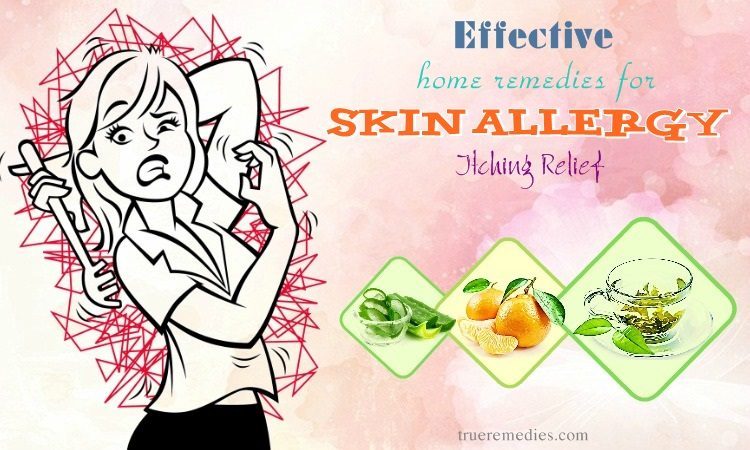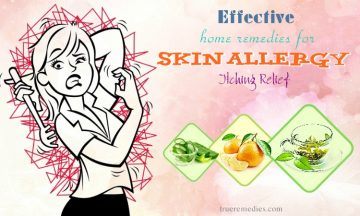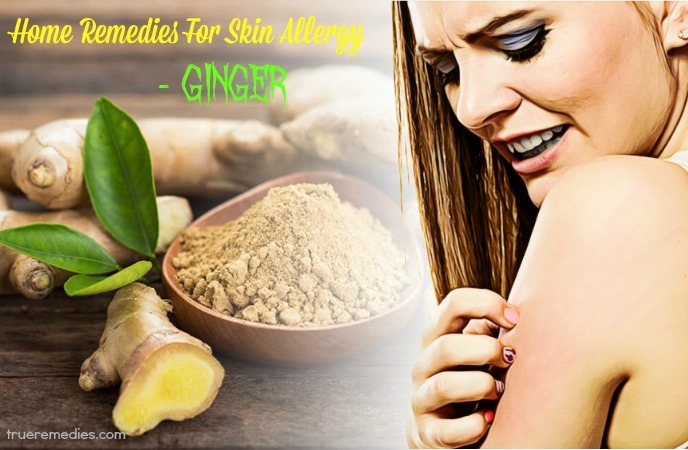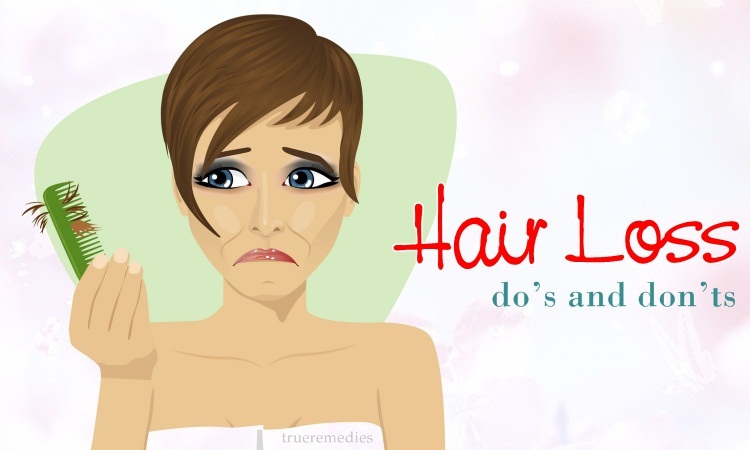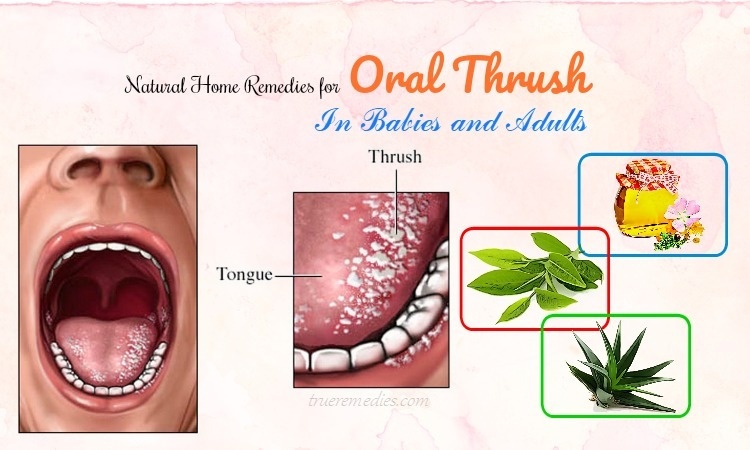updated: 12/04/2019
Contents
Skin allergy is a common condition in the worldwide population. Although this is a popular skin disease, you should not underestimate it because it may have a lot of impact on your life. With mild conditions, the disease causes some discomfort to the patients, such as itching, fever, etc. But with severe conditions, skin allergy may leave the scar or skin color changes. For mild conditions, you can get rid of it naturally at home. In this post, we will list out some of the effective home remedies for skin allergy itching relief.
- Home remedies for allergies to dust, pollen, food, bee stings
- Home remedies for heat rash on face, neck, arms, and legs
- Natural home remedies for dermatitis symptom relief
What Is Skin Allergy?
Skin allergy commonly occurs when your skin comes in contact with anything that makes it sensitive or allergic. This disease may happen in anyone, especially in people with hypersensitivity and low resistance. It is a chronic disease and is prone to outbreaks and self-healing after a period of time. It may occur in any area of the skin, but the most common area is the back of the knee and the arm. The disease tends to explode periodically and progressively decreases. Skin allergies usually include skin allergy due to skin contact and skin allergy due to weather changes[1] [2].
Skin allergy is a common condition that is not contagious, but it makes you feel uncomfortable. Skin allergy causes the skin to become irritated, itchy, dry and flaky. It may make you itch very much, affecting your sleep and daily activities. When you have the skin allergy, you may have another condition such as asthma or allergic rhinitis. With mild conditions, you can control the disease right at home. But with severe conditions, seek medical assistance to prevent the condition from worsening.
What Are Common Causes Of Skin Allergy?
Common causes of skin allergy include:
TrueRemedies Partner Solutions

Need a Help from the Leading Expert Online, Available 24/7?
They’re all here and ready to answer your questions online or by phone. Keep asking questions until you get the answer you need.
- Hair dye, hair straighteners
- Nickel – a metal found in jewelry and buckles
- If the patient is sensitive to rubber material, they may be allergic to certain fruits such as butter, kiwi, and chestnut; these patients are prone to itching and local rash.
- Some nuts may cause skin allergies such as pecans, pistachios, pine nuts, walnuts. One of the most common food allergens is peanuts. People who are allergic to peanut cause very serious effects.
- Other foods containing allergenic proteins include soybeans, wheat, fish (tuna), seafood (shrimp, oysters, snails …), fruit (butter, durian …), vegetables, spices (MSG, pepper), synthetic and natural colors, chemical additives and chickens.
- Citrus fruits, especially their shell
- The scent of soap, shampoo, perfume, and cosmetics
- Some special medications used on the skin.
- Environmental pollution, smoke, and dust
- Change of weather
What Are Common Symptoms Of Skin Allergy?
Skin allergies often cause inflammation, rashes, and swelling within the skin. Skin allergy may be different in infants, children, and adults. These symptoms include:
- The itching occurs more in the evening
- Red or brownish skin areas appear on the arms, legs, ankles, wrists, neck, chest, eyelids, elbows or knees.
- Skin is thick, dry and flaky
- Skin is sensitive and swollen by scratching
For infants, the symptoms usually appear early. Infants may have a skin allergy even when they are from 2 to 3 months old. Dry skin usually appears on the face, scalp and may cause insomnia in infants. They can rub on the bed, rug or other items around to relieve itching. This is very easy to cause skin infections.
When skin allergy occurs in children 2 years of age or older, the child often has a rash on the crease of the elbow or knee. Skin becomes thicker by scratching.
Symptoms of skin allergy in adults are different from infants and children. This disease may begin to appear on their body, causing the skin to dry and flake.
Who Is At High Risk Of This Problem?
Some risk factors for developing skin allergy include:
- Age: this disease is more common in children than in adults
- Allergies and asthma: People who have allergies, fever or asthma are more likely to have skin allergies than others
- Careers: Jobs that require exposure to certain metals, solvents or detergents increase the risk of skin allergy
- Health status: You may be at risk of this disease if you have certain conditions such as congestive heart failure, Parkinson’s disease or HIV.
When To See A Doctor?
You should contact your doctor if you have the following symptoms:
- Skin allergy disturbs your everyday activities and makes it difficult for you to sleep
- The affected skin areas become painful
- Skin infection, pus or yellow scales appear on affected skin areas
- Patients cannot take care of themselves
- Skin allergy affects the eyesight of the patient
Top 17 Effective Home Remedies For Skin Allergy Itching Relief
1. Honey
Honey contains high amounts of water, this may provide moisture and the necessary nutrients to the skin to make it become healthier, and at the same time, this helps to limit skin dehydration[3]. It additionally embraces powerful immunoregulatory and antimicrobial activities that may promote the healing of rashes caused by an allergy and provide instant relief from redness and itching[4].
To apply this remedy, please follow the steps below:
- Apply directly pure honey on the skin about 2 times a day.
- While applying, you can perform a gentle massage so that the nutrients in the honey soak into the skin to nourish and soften the skin in the most effective way.
- After about 15-20 minutes, wash your skin with clean water
2. Oatmeal
Oatmeal has an anti-inflammatory effect, but some people with sensitive skin may have some reaction with oatmeal. Therefore, those who are sensitive to oatmeal can ignore this way. As we mentioned above, when you are allergic to the skin, moisturizing the skin is very important, and oatmeal can help you do that. Oatmeal contains saponins, which help cleanse, moisturize and remove dead cells, so you can use it as a facial cleanser to remove dirt and viruses that damage your skin. Avenanthramide in oatmeal is a natural anti-inflammatory[5] and has a healing effect. You can also use mix it with warm water to treat dry skin. According to a study in 2012, colloidal oatmeal may protect skin and calm the irritation and itching[6].
3. Sugar-Free Yogurt
This sounds strange when it comes to home remedies for skin allergy, but it works. Do you know that yogurt has a lot of beneficial microorganisms, which help to effectively destroy pathogenic bacteria? Yes, that is true. Yogurt contains lactic acid that moisturizes and soothes the skin[7]. It also provides vitamins and water which are good for allergic skin[8]. Just apply some yogurt directly to your skin and let it dry again. Do this for about 15 minutes for the skin to absorb the substances.
If your skin is not allergic to oatmeal, you can mix yogurt with it to mask the allergy area.
4. Orange
Orange contains lots of vitamin C, which protects the skin from the harmful effects of UVA and UVB, stimulates collagen production, and prevents melasma and dermatitis[9] [10]. It is also rich in phytochemical antioxidants. An orange contains about 170 mg of phytochemicals including lotions and anti-aging. Besides, the fruit contains a lot of polyphenols[11] as an antiviral, anti-inflammatory, anti-allergic, anti-cancer and anti-proliferative. Use orange as a treatment of skin allergy will give the best effect.
Method 1: Pure Orange Juice
Antioxidants in oranges[12] help transport oxygen throughout the body, triggering a detoxifying process, especially detoxification. So if you eat orange regularly, your skin will be protected from free radicals, reducing the risk of skin allergy. You only need to drink a cup of orange juice every day in a week. Perform this method 2-3 weeks for the best effect.
Method 2: Orange Peel
- Prepare 100 grams of orange peel, 100 ml of water.
- Rinse the orange peel, add it into the water, and boil them.
- Leave for 30 minutes after boiling and extract the juice of orange peel.
- Use the juice to lightly spray on skin allergy.
- Massage gently in a clockwise direction. Then rinse your skin allergy again with water.
Method 3: Orange Peel, Rose Petals And Turmeric Powder
To take advantages of these ingredients, follow these guidelines below:
- Prepare 200 grams of orange peel, 10 grams of rose petals and 2 teaspoons of turmeric.
- Rinse the orange peel and rose petals, then dry them under the sun or grill.
- Mix the orange peel and rose petals and grind them in a grinder.
- Add the turmeric powder to the mixture and add 3 tablespoons of water to form a thick mixture.
- Use the mixture to apply to your allergy skin area.
You can use this method 2-3 times a week for best results.
Method 4: Orange And Yogurt
- Prepare half of orange, a box of yogurt without sugar.
- Squeeze orange juice and mix the orange juice with yogurt.
- Use the mixture to apply to your allergy skin. Massage gently and leave for 30 minutes. Then rinse your skin with water.
5. Grapefruit
Grapefruit is rich in vitamin C and vitamin E, which improves the horn of the skin and reduces the level of allergy skin. It also contains a substance called limonoids, which helps prevent tumors by promoting an enzyme in the liver to stimulate the elimination of toxins from the body. Limonoids also help fight cancer of the skin, mouth, lungs, stomach. The use of grapefruit daily as a treatment of allergy skin will give the best effect. Apart from that, it may help to eliminate the free radicals, delay the development of redness or sunburn on your skin, block the anti-inflammatory compounds, and improve skin elasticity and stiffness[13].
Method 1: Only Grapefruit
You need to eat a grapefruit a day, 2-3 day a week as a treatment of skin allergy. You can also drink 3 cups of grapefruit juice for faster performance.
Method 2: Grapefruit Oil And Olive Oil
- Prepare 3 tablespoons of grapefruit oil, 1 tablespoon of olive oil.
- Mix the grapefruit oil with olive oil.
- Use the mixture to apply to the area of skin allergy.
- Massage gently and leave for 5 minutes then rinse with water.
Method 3: Grapefruit Peel And Olive Oil
- Prepare the peel from a grapefruit and 2 tablespoons of olive oil.
- Rinse the peel of grapefruit and grind it in a grinder.
- Add the olive oil and 200 ml water with the grapefruit.
- Boil the mixture for 30 minutes and let the mixture cool down.
- Extract the juice of grapefruit and olive oil.
- Use the mixture apply to the area of skin allergy. Massage gently and leave for 10 minutes then rinse.
6. Ginger
Ginger has 2% – 3% essential oils, 5% resins, 3% fat, starch and spicy substances like zingeron, shogaol. Ginger and ginger oils are also believed to provide many health benefits. Regular use of ginger may help to prevent gallstones, dysmenorrhea, prolong the lifespan, relieve stress, and decrease blood cholesterol[14]. Thanks to its impressive anti-inflammatory and antimicrobial properties, ginger may work wonders in fighting off a skin allergy and easing the itchiness and inflammation associated with it[15].
Method 1: Only Ginger
Cut a slice of ginger then apply it to your skin allergy. Leave for 10 minutes and rinse your skin. Do this method 2 times a day and 4-5 days a week for the best effect.
Method 2: Ginger And Vinegar
- Prepare 1 ginger, 2-3 tablespoons vinegar, 200 ml water.
- Rinse ginger, then grind it in the grinder.
- Add the ginger and vinegar to 200 ml of water and boil them.
- After boiling, leave for 15 minutes and consume the mixture.
- You can also apply to the allergy skin while gently massaging.
- Try this method 4-5 times a week.
Method 3: Ginger And Wine
- Prepare ginger and 200 ml wine.
- Rinse the ginger before grinding it in a grinder.
- Put the ginger in the wine and leave for 2-3 days.
- Use the mixture to apply to the allergy skin.
- Follow this home treatment for 4-5 times a week for quick results.
Note:
- Avoid using ginger with aspirin and coumarin (at least 4 hours away).
- Do not use ginger for the preparation for surgery and postoperative, bleeding hemorrhoids, nosebleeds, bleeding teeth, coughing blood, vomiting blood, blood in the urine.
- Do not use ginger for people who get a sunburn, sweating, or high fever.
- Do not use a large amount of ginger in many days for people with diabetes, heart disease, and pregnant women.
7. Aloe Vera
Aloe vera is abundant in anti-inflammatory activities, which may help to heal the skin, improve wound healing, and treat minor burns and rash skin itching[16] [17]. It is also plentiful in anti-inflammatory and antibacterial agents, which are very good when used to treat acne, skin diseases, healing of skin lesions, and skin allergy.
It further contains the essential vitamins and minerals, such as vitamins A, C, E, B1, B2, and B12, all of which are essential for the regeneration of new skin cells, helping the skin to be whiter.
Method 1: Only Aloe Vera
- Prepare 200 grams of aloe vera
- Rinse the aloe vera and peel it.
- Grind the aloe vera and take its juice.
- Apply the juice to your skin allergy.
- After 3 minutes, rinse your skin with water.
Method 2: Aloe Vera And Honey
- Prepare 200 grams of aloe vera and 3-4 teaspoons of honey.
- Rinse the aloe vera and grind it in a grinder.
- Add the honey and stir well.
- Put the mixture into the refrigerator for 30 minutes
- Apply to your skin allergy and gently massage.
- Reuse it 3-4 times a week for the best effect.
8. Green Tea
Green tea is a natural herbal remedy for numerous skin disorders or diseases [18]. It contains a lot of vitamins, antioxidants that have bactericidal and anti-inflammatory effects. Using green tea to treat skin allergy will be very effective[19].
Method 1: Only Green Tea
You grind some green teas and apply it to your skin allergy. Leave 5 minutes and rinse your skin allergy with water.
Method 2: Green Tea And Salts
- Take 20 grams of green tea leaves, 3 tablespoons of salt and 500 ml of water.
- Rinse the green tea leaves and boil them with water.
- After boiling, let the green tea cool down and add the salt.
- Use the mixture to soak your skin allergy area.
Additional Tips
Apart from using the above home remedies for skin allergy, you should also try some tips below for optimum results:
- Avoid using skin care cosmetics, beauty skin, soap, and detergent because they are identified as the main culprit in cases of skin rash due to allergy.
- Take care of your skin gently; do not use hard cotton or something to rub strongly on the skin allergic.
- When itching, use ice to apply to the affected area.
- Don’t let exposed skin contact with hot water. This will only make the situation worse.
- Drink a lot of water to help relieve itchy rash caused by skin allergy.
These home remedies have been tested for safety and effectiveness by many people. Just simply try one of them to find the best one for you. If you know any other home remedies for skin allergy, do not hesitate to drop your words below this post. Take care!

